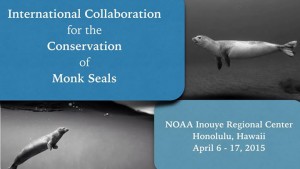Recent Publications
![]() Pujol, Juan A. 2015. Un antiguo caso de predación de foca monje mediterránea adulta, Monachus monachus (Hermann, 1779) por tiburón blanco, Carcharodon carcharias (Linnaeus, 1758) en las Islas Baleares, España. Bol. R. Soc. Esp. Hist. Nat. 109: 71-74. [https://www.researchgate.net/publication/296467824_Un_antiguo_caso_de_predacion_de_foca_monje_mediterranea_adulta_Monachus_monachus_Hermann_1779_por_tiburon_blanco_Carcharodon_carcharias_Linnaeus_1758_en_las_Islas_Baleares_Espana]
Pujol, Juan A. 2015. Un antiguo caso de predación de foca monje mediterránea adulta, Monachus monachus (Hermann, 1779) por tiburón blanco, Carcharodon carcharias (Linnaeus, 1758) en las Islas Baleares, España. Bol. R. Soc. Esp. Hist. Nat. 109: 71-74. [https://www.researchgate.net/publication/296467824_Un_antiguo_caso_de_predacion_de_foca_monje_mediterranea_adulta_Monachus_monachus_Hermann_1779_por_tiburon_blanco_Carcharodon_carcharias_Linnaeus_1758_en_las_Islas_Baleares_Espana]
Abstract
In 1906, a white shark (Carcharodon carcharias) was accidental [sic] trapped in Ciutadella (Balearic Islands). In its stomach was found an adult Mediterranean monk seal (Monachus monachus), being the first chronological case of predation between both species in the Mediterranean sea.
Resumen
En 1906 un ejemplar de tiburón blanco (Carcharodon carcharias) fue atrapado accidentalmente en la almadraba de Ciudadela (Islas Baleares). En su estómago fue encontrado un adulto de foca monje mediterránea (Monachus monachus), constituyendo cronológicamente el primer caso de predación entre ambas especies en el Mediterráneo.

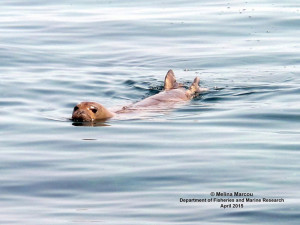
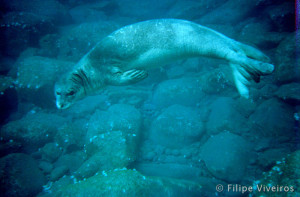
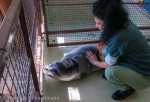
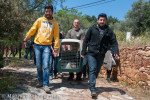
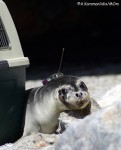
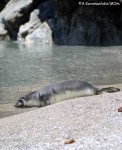
 Endangered seal swims to Israel from Lebanon to hunt some fish; photographs reveal that this is the third visit by the same seal since 2010.
Endangered seal swims to Israel from Lebanon to hunt some fish; photographs reveal that this is the third visit by the same seal since 2010.